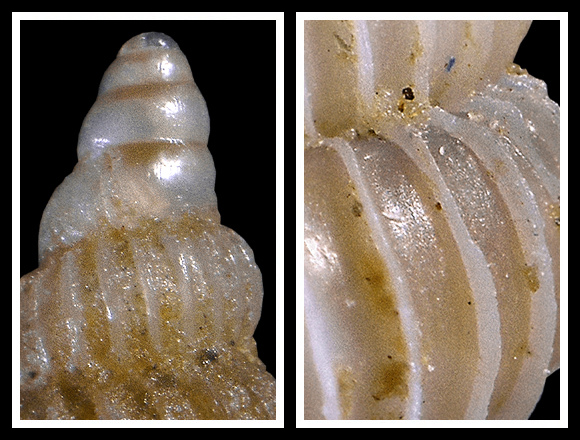(Kanmacher, 1798)

Norway to Lusitanian seamounts and W. Mediterranean. The species finds its food from sea-anemones such as Anthopleura biscayensis (Fischer, 1874) in the intertidal (north, common) down to the continental shelf (south, rare) and the slope. Studies of dissected animals suggest that the Epitonium feeds possibly « on mucus-boluses such as are regularly ejected by sea anemones after feeding and digestion. These boluses, extruded from the gastric cavity through the mouth, generally contain partly digested and non-digestible matter, and are often contaminated with nematocysts and/or small fragments of filament. » – J. C. Den Hartog: “Observations on the Wenteltrap Epitonium clathratulum (Kanmacher, 1797) (Prosobranchia, Epitoniidae) and the Sea Anemone Bunodosoma biscayensis (Fischer, 1874) (Actiniaria, Actiniidae)”, Basteria vol. 51 (1987), p.101. In this case, this species could be not, or not only, a predator as previously assumed.
2m deep, Playa Seghers, Estepona, Andalucia, S. Spain. 5,2mm.

The shell of this Epitonium is close to that of pulchellum or spirilla but is a little more slender than the latter, and bears fewers lamellae than pulchellum. No spiral scupture. The radials are slightly prosocline to orthocline. Protoconch without particular features, showing, as often in the family, a slight axial break at the transition.